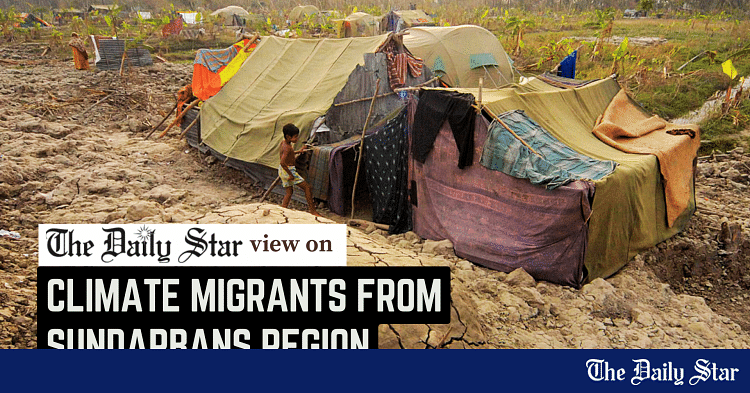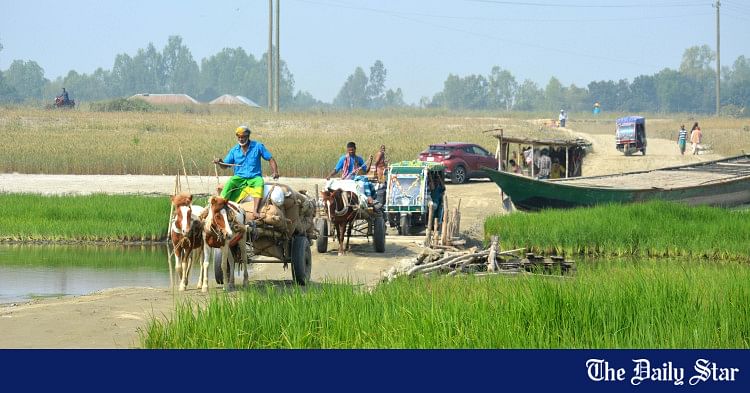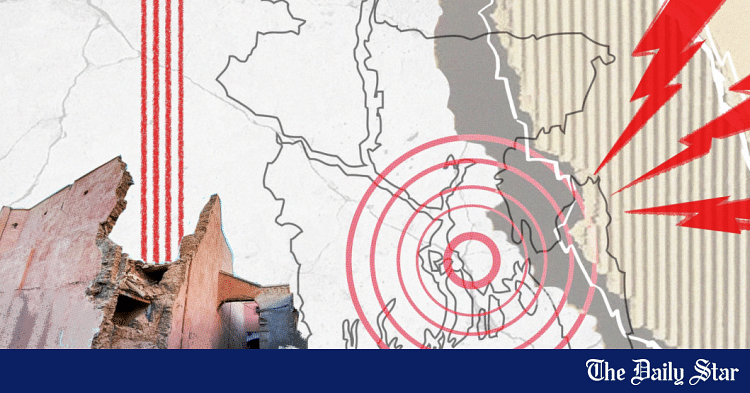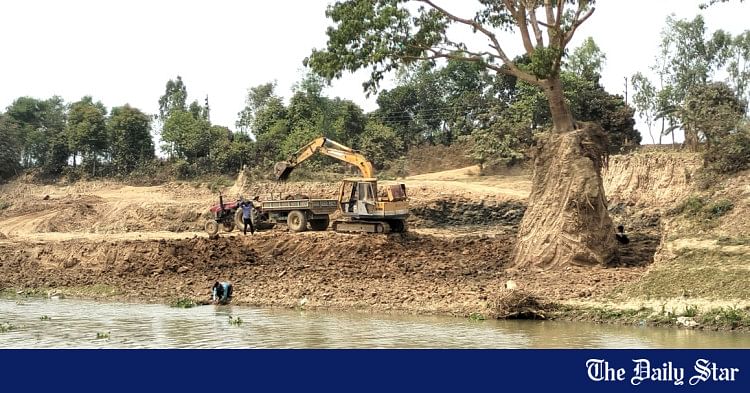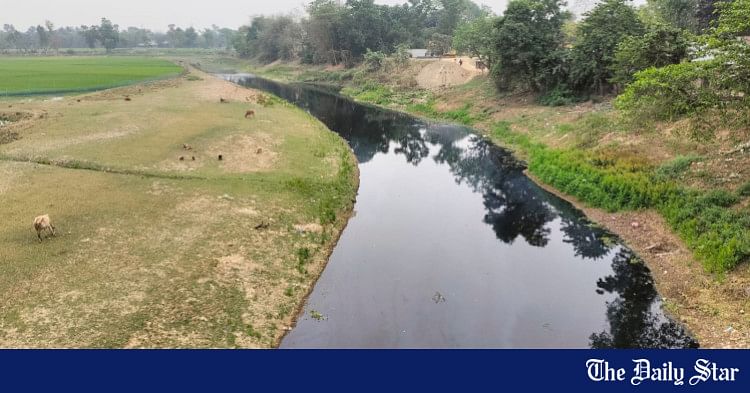- Copy to clipboard
- Thread starter
- #376
Saif
Senior Member
- Messages
- 14,242
- Reaction score
- 7,473
- Origin

- Residence

- Axis Group

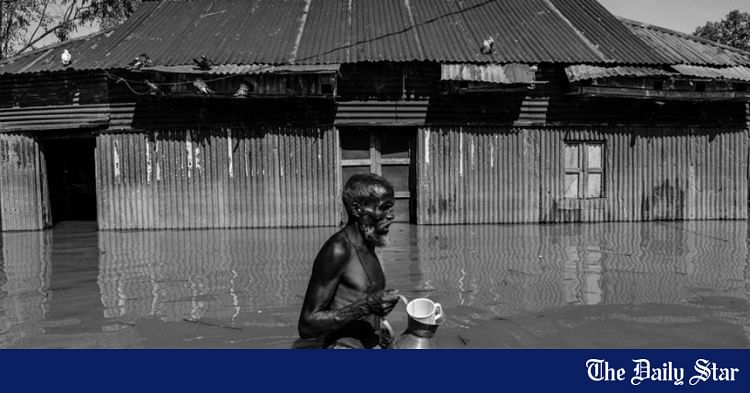
Our coastal communities need a climate justice plan
Bangladesh faces climate crisis: rising seas threaten 20M by 2050. Least responsible, most affected.
Our coastal communities need a climate justice plan

Climate justice isn’t just an ethical concept, it’s a necessity for the survival of the most vulnerable populations. FILE PHOTO: ZIAUL HAQUE OISHARJH
Last year, the United Nations issued a "red alert" for the future of the world due to the escalating impacts of climate change. The "red alert" highlighted the unprecedented record-breaking heat and extreme weather events, signalling the urgency of addressing the climate crisis. Bangladesh, being one of the most vulnerable countries, is facing the brunt of this crisis, with rising sea levels and extreme weather events threatening its coastal communities. Coastal areas are not only at risk of disappearing beneath rising seas but are also witnessing an acceleration of cyclonic activity, salinity intrusion, and the collapse of vital ecosystems. It is high time that the world, particularly the developed nations most responsible for climate emissions, recognise the necessity of climate justice for the vulnerable communities whose homes are under threat.
Bangladesh's coastal areas are particularly susceptible to the consequences of climate change. According to the Bangladesh Climate Change Adaptation and Resilience Fund (BCCARF), sea level rise could displace up to 20 million people by 2050, primarily from Bangladesh's coastal zones. The World Bank's projections paint a similarly grim picture, stating that Bangladesh's coastline, home to some of the most impoverished and marginalised populations, faces devastating threats from climate-related disasters.
This catastrophe is made even more unfair by the fact that Bangladesh, with its negligible contribution to global carbon emissions, bears the heaviest toll. The irony is palpable: countries like the United States, China, and members of the European Union, who are the largest emitters of greenhouse gases, are largely unaffected by the climate disasters wreaking havoc in Bangladesh's coastal regions.
Climate justice isn't just an ethical concept, it's a necessity for the survival of the most vulnerable populations. In Bangladesh, it means ensuring that those most affected by climate change, who have contributed the least to its cause, receive the support they need to adapt to and mitigate the impacts of the crisis.
Climate justice must be seen as both distributive and procedural. Distributive justice refers to the fair allocation of resources to those most in need. In the case of Bangladesh, this means ensuring that the country receives adequate climate finance to implement adaptive measures, build resilient infrastructure, and protect vulnerable populations from the escalating impacts of climate change. This financial support should be sourced from countries historically responsible for the majority of carbon emissions. These nations must not only reduce their emissions but also provide the necessary compensation to protect vulnerable nations like Bangladesh.
Procedural justice, on the other hand, demands that those most affected by climate change—especially marginalised communities, have a say in the decision-making processes surrounding climate action. In Bangladesh, women, indigenous groups, and low-income communities must be included in climate discussions at all levels, from local to international. Their voices and local knowledge are vital in creating solutions that are both effective and culturally appropriate.
To truly achieve climate justice for Bangladesh's coastal communities, we need both global and local action. At the international level, countries responsible for high emissions must fulfill their financial commitments under the Paris Agreement, ensuring that Bangladesh receives sufficient climate financing to adapt to and mitigate the impacts of climate change. The funds allocated should be directed toward the most vulnerable regions, focusing on projects that prioritise both resilience and equity.
At the national level, Bangladesh must continue to strengthen its disaster management systems and promote policies that prioritise climate resilience for marginalised communities. But it is equally important to ensure that local communities are not just recipients of aid but active participants in the solution. Local adaptation strategies, such as eco-friendly agricultural practices, disaster-resilient infrastructure, and capacity-building for women and youth must be supported through targeted funding and policy interventions.
Furthermore, Bangladesh's voice must be amplified on the global stage, demanding accountability from those who have contributed the most to climate change. The country's leaders must continue to advocate for compensation and financial support, ensuring that climate justice is integrated into international climate agreements.
The urgency of climate justice for Bangladesh cannot be overstated. As one of the most vulnerable countries in the world, Bangladesh needs not just global solidarity but a fair distribution of resources to protect its people from the worst effects of climate change. It is not enough for the world to acknowledge the problem; it must take concrete action. By ensuring that climate justice is grounded in both distributive and procedural justice, we can create a future where Bangladesh's coastal communities have the resources, support, and voice they need to navigate the stormy waters ahead.
The "red alert" is a wake-up call for the world. It is time for countries responsible for the climate crisis to honour their commitments and provide the necessary support to nations like Bangladesh. Climate justice is not just a moral obligation, it is a lifeline for the millions at risk in the most vulnerable corners of the planet.
Md. Al-Mamun is researcher and social scientist at the Brac Institute of Governance and Development (BIGD).
Climate justice isn’t just an ethical concept, it’s a necessity for the survival of the most vulnerable populations. FILE PHOTO: ZIAUL HAQUE OISHARJH
Last year, the United Nations issued a "red alert" for the future of the world due to the escalating impacts of climate change. The "red alert" highlighted the unprecedented record-breaking heat and extreme weather events, signalling the urgency of addressing the climate crisis. Bangladesh, being one of the most vulnerable countries, is facing the brunt of this crisis, with rising sea levels and extreme weather events threatening its coastal communities. Coastal areas are not only at risk of disappearing beneath rising seas but are also witnessing an acceleration of cyclonic activity, salinity intrusion, and the collapse of vital ecosystems. It is high time that the world, particularly the developed nations most responsible for climate emissions, recognise the necessity of climate justice for the vulnerable communities whose homes are under threat.
Bangladesh's coastal areas are particularly susceptible to the consequences of climate change. According to the Bangladesh Climate Change Adaptation and Resilience Fund (BCCARF), sea level rise could displace up to 20 million people by 2050, primarily from Bangladesh's coastal zones. The World Bank's projections paint a similarly grim picture, stating that Bangladesh's coastline, home to some of the most impoverished and marginalised populations, faces devastating threats from climate-related disasters.
This catastrophe is made even more unfair by the fact that Bangladesh, with its negligible contribution to global carbon emissions, bears the heaviest toll. The irony is palpable: countries like the United States, China, and members of the European Union, who are the largest emitters of greenhouse gases, are largely unaffected by the climate disasters wreaking havoc in Bangladesh's coastal regions.
Climate justice isn't just an ethical concept, it's a necessity for the survival of the most vulnerable populations. In Bangladesh, it means ensuring that those most affected by climate change, who have contributed the least to its cause, receive the support they need to adapt to and mitigate the impacts of the crisis.
Climate justice must be seen as both distributive and procedural. Distributive justice refers to the fair allocation of resources to those most in need. In the case of Bangladesh, this means ensuring that the country receives adequate climate finance to implement adaptive measures, build resilient infrastructure, and protect vulnerable populations from the escalating impacts of climate change. This financial support should be sourced from countries historically responsible for the majority of carbon emissions. These nations must not only reduce their emissions but also provide the necessary compensation to protect vulnerable nations like Bangladesh.
Procedural justice, on the other hand, demands that those most affected by climate change—especially marginalised communities, have a say in the decision-making processes surrounding climate action. In Bangladesh, women, indigenous groups, and low-income communities must be included in climate discussions at all levels, from local to international. Their voices and local knowledge are vital in creating solutions that are both effective and culturally appropriate.
To truly achieve climate justice for Bangladesh's coastal communities, we need both global and local action. At the international level, countries responsible for high emissions must fulfill their financial commitments under the Paris Agreement, ensuring that Bangladesh receives sufficient climate financing to adapt to and mitigate the impacts of climate change. The funds allocated should be directed toward the most vulnerable regions, focusing on projects that prioritise both resilience and equity.
At the national level, Bangladesh must continue to strengthen its disaster management systems and promote policies that prioritise climate resilience for marginalised communities. But it is equally important to ensure that local communities are not just recipients of aid but active participants in the solution. Local adaptation strategies, such as eco-friendly agricultural practices, disaster-resilient infrastructure, and capacity-building for women and youth must be supported through targeted funding and policy interventions.
Furthermore, Bangladesh's voice must be amplified on the global stage, demanding accountability from those who have contributed the most to climate change. The country's leaders must continue to advocate for compensation and financial support, ensuring that climate justice is integrated into international climate agreements.
The urgency of climate justice for Bangladesh cannot be overstated. As one of the most vulnerable countries in the world, Bangladesh needs not just global solidarity but a fair distribution of resources to protect its people from the worst effects of climate change. It is not enough for the world to acknowledge the problem; it must take concrete action. By ensuring that climate justice is grounded in both distributive and procedural justice, we can create a future where Bangladesh's coastal communities have the resources, support, and voice they need to navigate the stormy waters ahead.
The "red alert" is a wake-up call for the world. It is time for countries responsible for the climate crisis to honour their commitments and provide the necessary support to nations like Bangladesh. Climate justice is not just a moral obligation, it is a lifeline for the millions at risk in the most vulnerable corners of the planet.
Md. Al-Mamun is researcher and social scientist at the Brac Institute of Governance and Development (BIGD).

